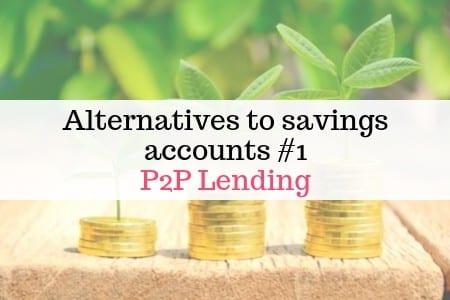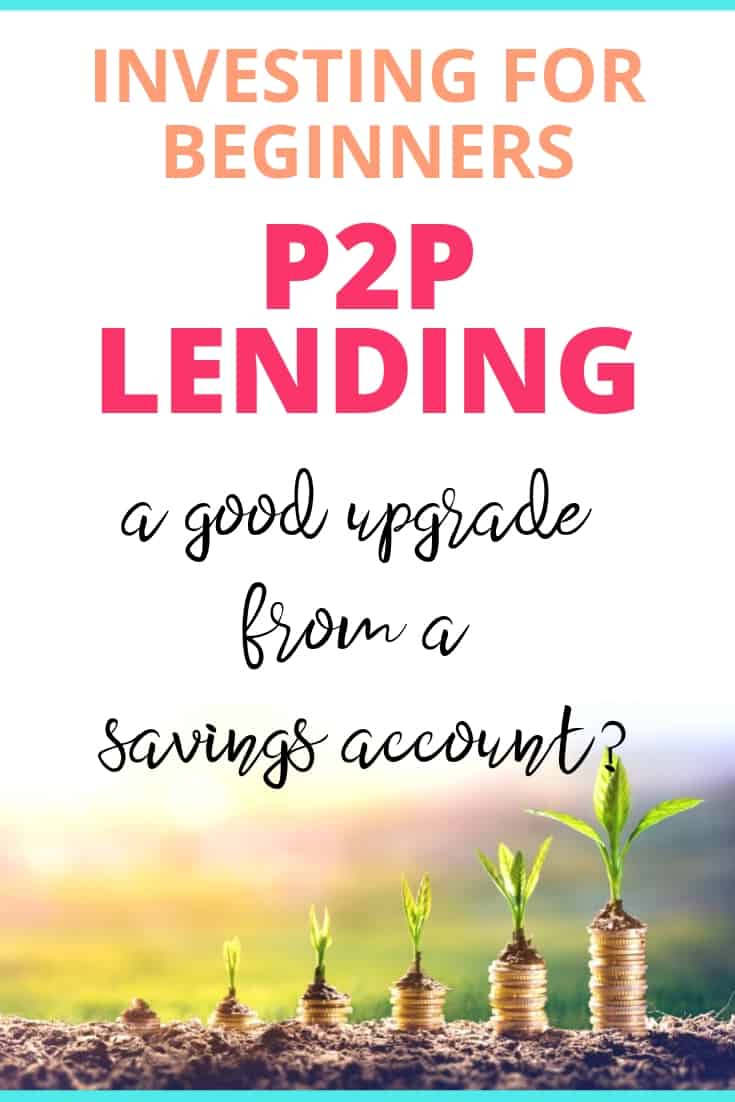Why it might be time to upgrade yourself from a savings account (Part 1 – P2P)
Posts contain affiliate links, see disclosure for more details.
Are you getting rubbish interest rates on your savings account? Thinking about other ways of investing but not really sure where to start?
I’ve invited Simon from Financial Expert to share some insights into what investment alternatives exist to the humble savings account, and what risks those alternatives carry.
In this two part series, Simon covers only options which represent an incremental step up in risk and returns, to appeal to savers who have always stuck to banks and building societies in the past.

The problem: Savings accounts don’t work anymore
The interest rates on UK savings accounts have been dismally low for a decade.
At the time of writing, the best rate available is 2.15% per year. To access this rate, you would need to lock your cash away for three years.
Savers will be depressed to learn that inflation, (the measure of prices compared to the previous year) currently stands at 2%. This means that savings in the best buy account would not have any additional buying power if you withdrew them after a year.
This situation turns the incentive to save on its head. Interest encourages us to save by offering a reward in the future, in return for foregoing money in the present. Without a real return – there’s less incentive to tuck cash away at all.
This creates a problem for retirement savers. Many retirement plans rely upon the snowball effect of compound interest to reach their target value. If the real spending power of savings accounts is not increasing, then more contributions will be needed to reach the same goal.
The realisation that saving in a bank account will leave us no better off is a huge turn-off for savers of all ages.
Is it any surprise that the UK households saving ratio (the proportion of income saved) has plummeted to historic lows?
The saving ratio is currently 4.5%. The last time the UK saved this little was during the 1960s.
Before investing in alternatives, build a cash buffer
If you are upset by the current situation and are interested in increasing the return you receive on your funds, read on in this article series for information on two alternatives.
For the purpose of this article, we will only discuss alternatives for long term savings. I.e. money that you can go without for five years or more.
Before money is committed to long term savings, you must ensure that you have sufficient amounts set aside in a rainy day fund which can cover significant unforeseen expenses.
As a guide, you should only feel comfortable committing to long term investments if your rainy day fund could cover three months of wages.
We cannot predict the future, so we don’t know what will go wrong. But what we do know is that something unpredictable probably will crop up. All we can do is keep a generous cash buffer to ensure that if a surprise does appear, it won’t play havoc with our investing strategy.
Alternative 1: Peer to Peer lending platforms (P2P)
Rate of return: 4% – 10%.
Risk: Low to high risk, depending on the rate offered.
What are Peer to Peer lending platforms?
Peer to Peer lending platforms have existed in the UK for just over a decade.
P2P platforms provide the technology to connect savers with borrowers. Savers want a good interest rate on their funds, and borrowers are prepared to pay a fair interest rate to borrow money. This is a great match.
A P2P platform will manage all the administration on behalf of investors. This includes performing credit checks, receiving repayments and communicating with the borrower.
They charge a fee for the service, which will vary between platforms but is usually around 1% per year. This is usually already incorporated into the rate of return that the platform advertises.
To compensate you for lending to riskier borrowers, interest rates charged on those loans will be slightly higher. The rates are priced in a way that will provide investors with a higher return, after expected defaults, to reward investors for taking on higher risks.
Who are the largest providers?
The three largest platforms and the value and type of loans they have issued are:
- Funding Circle – Business Loans – £5.4bn
- Zopa – Consumer Loans – £4bn
- Ratesetter – Consumer Loans – £3.4bn
It is clear from these stats that the largest P2P platforms have matured into very established businesses over the last ten years, and are no longer ‘start-ups’.
What are the risks?
Peer to peer platforms are often the first option suggested as an alternative for frustrated savers seeking higher rates. But it is important for savers to understand that additional risks come with the premium return.
The primary risk of making loans is that sometimes a borrower cannot afford to repay one, and is forced to default on the loan. This causes a loss for the savers who funded that loan.
Good platforms allow you to mitigate the risk of this happening by allowing you to spread your investment across a portfolio of hundreds or thousands of loans automatically.
Over large populations of loans, the levels of defaults are easier to predict, as they converge to a predictable average. This allows the platform to charge the right interest rate to be able to deliver the advertised return, after defaults.
What are the differences between a P2P account and a savings account?
Before you begin moving large balances into P2P platforms, you should be aware of the key differences between P2P platforms and savings accounts:
- P2P lenders are not covered by the FSCS compensation scheme. Therefore should the investments fail, or the platform itself fails, you will not be entitled to a refund from this scheme.
- P2P interest rates are set at a level designed to provide investors with a fair return after expected defaults. However, in a tough economic environment, the default rate may increase sharply beyond original predictions. This may result in a negative return for investors.
Finally, different P2P accounts have very different levels of exposure to bad debts. This is reflected in the rates they offer investors.
Funding Circle currently offers a maximum return of 6.5% per year. However, this relies upon lending to businesses, which have higher rates of default.
In contrast, Zopa only offers 4.5% on its Zopa Core product. This is because loans in this account are only made to borrowers with a relatively strong credit score. This means that the default rate is lower and you would expect it to be more resilient during a recession.
With this in mind, it would be a mistake to simply chase the highest advertised return, without considering your risk appetite. Higher rewards, will almost always mean higher risk.
Find the next article in this series here: Investing for beginners Part 2.
About the author: Simon writes at Financial-Expert.co.uk, a blog which specialises in free investing courses for beginners, taking readers step by step through areas such as how to invest in shares.
You might also like:
Pensions: An introductory guide >>
Why you need an emergency fund (and how to build one) >>
How much could you save by overpaying your mortgage? >>
Pin it!







